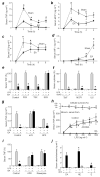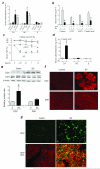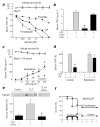Dopamine mediates vagal modulation of the immune system by electroacupuncture
- PMID: 24562381
- PMCID: PMC3949155
- DOI: 10.1038/nm.3479
Dopamine mediates vagal modulation of the immune system by electroacupuncture
Abstract
Previous anti-inflammatory strategies against sepsis, a leading cause of death in hospitals, had limited efficacy in clinical trials, in part because they targeted single cytokines and the experimental models failed to mimic clinical settings. Neuronal networks represent physiological mechanisms, selected by evolution to control inflammation, that can be exploited for the treatment of inflammatory and infectious disorders. Here, we report that sciatic nerve activation with electroacupuncture controls systemic inflammation and rescues mice from polymicrobial peritonitis. Electroacupuncture at the sciatic nerve controls systemic inflammation by inducing vagal activation of aromatic L-amino acid decarboxylase, leading to the production of dopamine in the adrenal medulla. Experimental models with adrenolectomized mice mimic clinical adrenal insufficiency, increase the susceptibility to sepsis and prevent the anti-inflammatory effects of electroacupuncture. Dopamine inhibits cytokine production via dopamine type 1 (D1) receptors. D1 receptor agonists suppress systemic inflammation and rescue mice with adrenal insufficiency from polymicrobial peritonitis. Our results suggest a new anti-inflammatory mechanism mediated by the sciatic and vagus nerves that modulates the production of catecholamines in the adrenal glands. From a pharmacological perspective, the effects of selective dopamine agonists mimic the anti-inflammatory effects of electroacupuncture and can provide therapeutic advantages to control inflammation in infectious and inflammatory disorders.
Figures




Comment in
-
Regulating innate immunity with dopamine and electroacupuncture.Nat Med. 2014 Mar;20(3):239-41. doi: 10.1038/nm.3501. Nat Med. 2014. PMID: 24603793 No abstract available.
References
-
- Angus DC, van der Poll T. Severe sepsis and septic shock. N Engl J Med. 2013;369:840–851. - PubMed
-
- Ulloa L, Tracey KJ. The "cytokine profile": a code for sepsis. Trends Mol Med. 2005;11:56–63. - PubMed
-
- Ulloa L. The vagus nerve and the nicotinic anti-inflammatory pathway. Nat Rev Drug Discov. 2005;4:673–684. - PubMed
-
- Annane D. Adrenal insufficiency in sepsis. Curr Pharm Des. 2008;14:1882–1886. - PubMed
-
- Tracey KJ, et al. Anti-cachectin/TNF monoclonal antibodies prevent septic shock during lethal bacteraemia. Nature. 1987;330:662–664. - PubMed
Publication types
MeSH terms
Substances
Grants and funding
LinkOut - more resources
Full Text Sources
Other Literature Sources
Medical
Molecular Biology Databases

